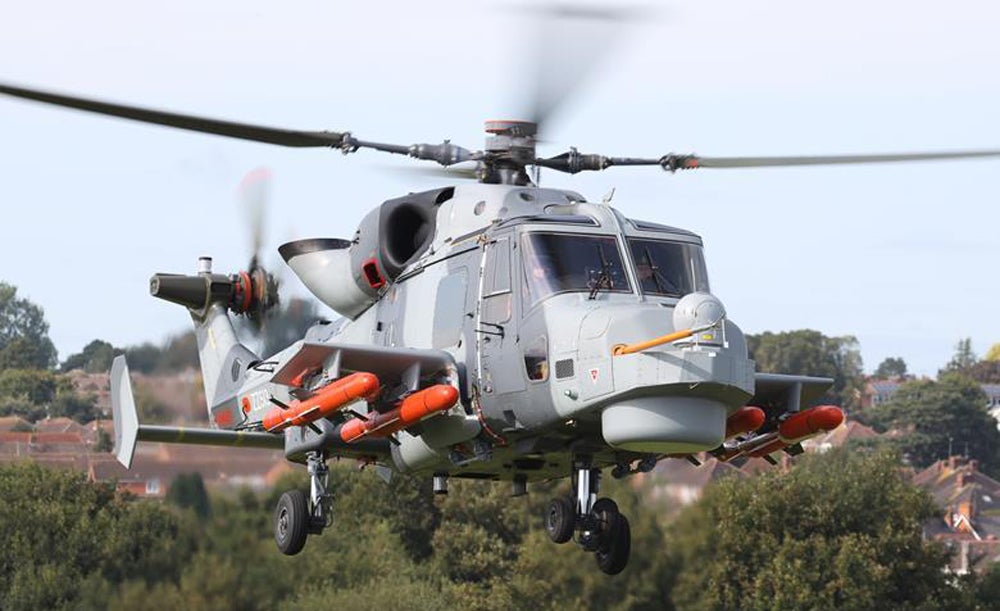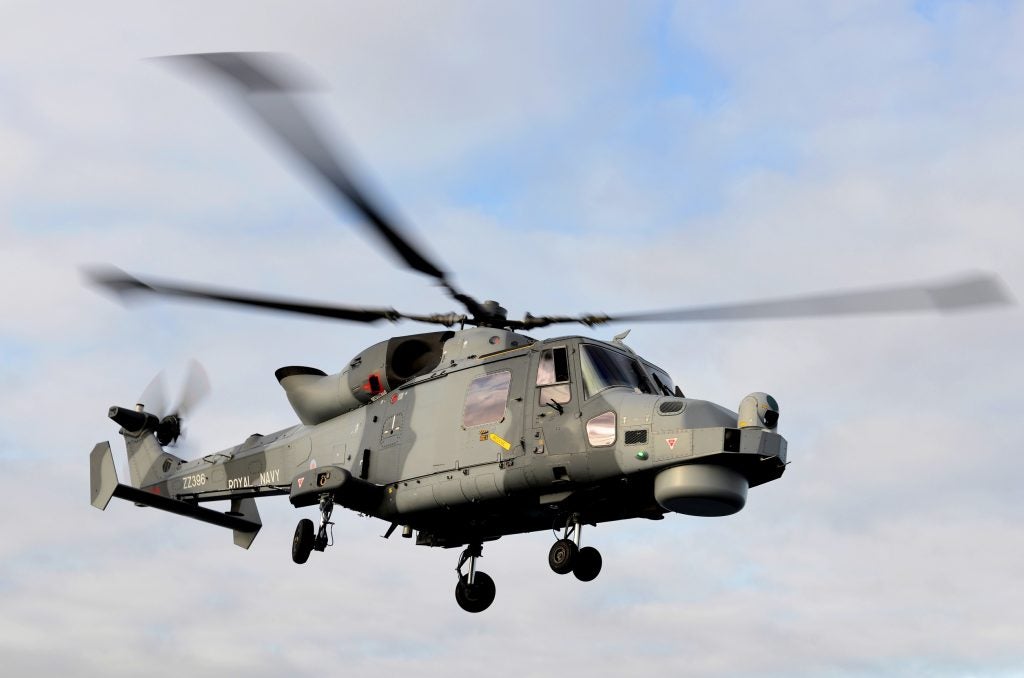UK Manned-Unmanned Teaming for Lynx Wildcat
Leonardo Helicopters and Britain’s Defence Science and Technology Laboratory (DSTL) are scheduled to conduct trials next month of Manned-Unmanned Teaming (MUM-T) with a British Army AH1 Lynx Wildcat controlling an unmanned aerial vehicle (UAV).
The trials will test the MUM-T concept with control of the UAV managed by the helicopter’s mission commander/observer. The UAV will be deployed up to eight kilometers distant and crews will be tasked to identify a person on the ground in varying levels of concealment.
The requirement was originally tabled by the Defence and Security Accelerator (DASA) competition announced in May last year by UK Ministry of Defense calling for industry submissions of; “unmanned semi-autonomous forward reconnaissance assets controlled from manned mobile assets”.
The Wildcat MUM-T testing will focus on the ability for the helicopter crew to manage both the flight of the UAV and its data feed. MUM-T is also a key capability for the British Army’s incoming AH-64E Apache Guardian. The new E variant has already been successfully tested for MUM-T with the MQ-1C Gray Eagle, MQ-11 Raven and RQ-7 Shadow UAVs.

In related news, the Royal Navy’s AW159 Wildcat HMA2 variant is still getting an offensive punch but integration challenges have delayed the program. Both the MBDA Sea Venom anti-ship missile and the Thales Sea Martlet Light Multirole Missile utilize the Wildcat Weapon Wing developed by Leonardo. The Weapon Wing offers four hardpoints enabling the carriage of four Marlet pods, each carrying five missiles, or up to four Sea Venoms.
The first operational deployment of the Weapon Wing is planned for next year during the maiden operational voyage of the HMS Queen Elizabeth, one of two new aircraft carriers built for the Royal Navy. The Wildcats will not however fly from the carrier but instead will launch from accompanying Type 23 frigates and Type 45 destroyers. It will also not initially carry the Sea Venom as integration work continues.

